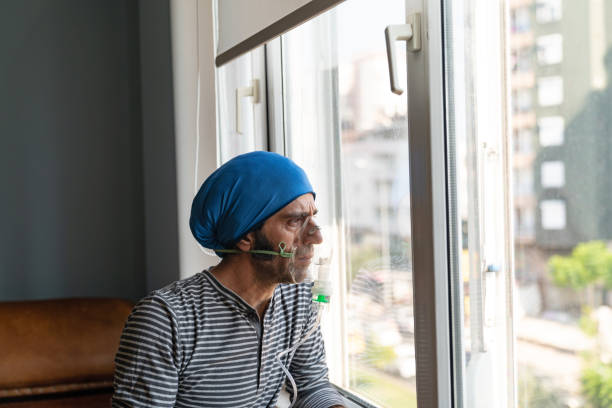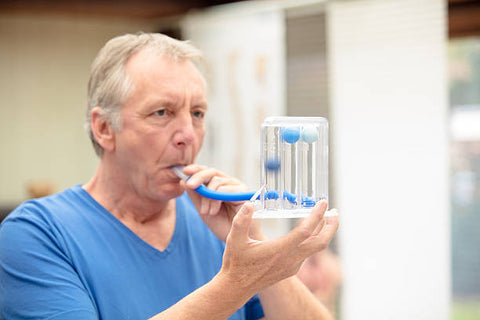Chronic Obstructive Pulmonary Disease, commonly referred to as COPD, is a progressive respiratory disease that affects millions of people worldwide. COPD is a term used to describe a group of lung diseases, including chronic bronchitis and emphysema, that cause difficulty breathing due to damage to the airways and air sacs in the lungs.

Symptoms of COPD
The symptoms of COPD vary from person to person and may not appear until the disease has progressed significantly. Some common symptoms of COPD include:
- Shortness of breath, particularly during physical activity
- Chronic cough with or without mucus production
- Wheezing
- Tightness in the chest
- Fatigue
- Frequent respiratory infections
Causes of COPD
COPD is typically caused by long-term exposure to irritants that damage the lungs, including cigarette smoke, air pollution, and workplace dust and chemicals. In rare cases, a genetic condition called alpha-1 antitrypsin deficiency can also cause COPD.
Treatment options for COPD
While there is no cure for COPD, there are several treatment options that can help manage symptoms and improve quality of life. Some common treatment options include:
-
Medications: Medications such as bronchodilators and corticosteroids can help improve breathing and reduce inflammation in the airways.
-
Oxygen therapy: Oxygen therapy can help improve breathing and increase oxygen levels in the blood.
-
Pulmonary rehabilitation: Pulmonary rehabilitation is a program of exercise, education, and support designed to help people with COPD manage their symptoms and improve their quality of life.
-
Surgery: In some cases, surgery may be necessary to remove damaged lung tissue or to replace damaged lungs with a lung transplant.
Prevention of COPD
The best way to prevent COPD is to avoid exposure to the irritants that cause it. This includes quitting smoking, avoiding secondhand smoke and air pollution, and wearing protective gear when working with chemicals and dust.
In conclusion, COPD is a chronic lung disease that causes difficulty breathing and other symptoms. While there is no cure for COPD, there are several treatment options available that can help manage symptoms and improve quality of life. By taking steps to prevent exposure to irritants that can cause COPD, such as quitting smoking and avoiding air pollution, individuals can reduce their risk of developing this debilitating disease.
Antibiotics for COPD
When antibiotics are prescribed for COPD exacerbations, they are used to treat the bacterial infection that is causing the exacerbation. Commonly prescribed antibiotics for COPD exacerbations include azithromycin, amoxicillin-clavulanate, doxycycline, and fluoroquinolones.
It's important to note that antibiotics should only be used for COPD exacerbations when there is clear evidence of a bacterial infection. Overuse of antibiotics can lead to the development of antibiotic-resistant bacteria, which can make treating infections more difficult in the future.
In addition to antibiotics, other treatments for COPD exacerbations may include bronchodilators to open up the airways, corticosteroids to reduce inflammation in the lungs, and oxygen therapy to improve oxygen levels in the blood.
If you have COPD and experience an exacerbation of your symptoms, it's important to talk to your healthcare provider about the best course of treatment, including whether or not antibiotics are necessary. It's also important to take steps to prevent exacerbations, such as quitting smoking, avoiding air pollution, and staying up to date with vaccinations to prevent respiratory infections.
Are COPD and emphysema the same?
COPD (Chronic Obstructive Pulmonary Disease) and emphysema are related but not the same conditions. Emphysema is one of the two main types of COPD, the other being chronic bronchitis.
Emphysema is a type of lung disease characterized by damage to the air sacs (alveoli) in the lungs. Over time, this damage can make it harder to breathe, as the air sacs lose their elasticity and become less efficient at exchanging oxygen and carbon dioxide with the blood. Emphysema is often caused by long-term exposure to irritants such as cigarette smoke, air pollution, or chemical fumes.
COPD is a term used to describe a group of lung diseases that cause airflow obstruction and difficulty breathing. In addition to emphysema, COPD includes chronic bronchitis, which is characterized by inflammation and narrowing of the airways, leading to excessive mucus production and coughing.
While emphysema is a type of COPD, not everyone with COPD has emphysema, and not everyone with emphysema has COPD. In general, emphysema tends to be associated with more severe cases of COPD, and people with emphysema may experience symptoms such as shortness of breath, coughing, wheezing, and chest tightness.
In conclusion, COPD and emphysema are related but distinct conditions. Emphysema is a type of COPD that involves damage to the air sacs in the lungs, while COPD includes both emphysema and chronic bronchitis. If you are experiencing symptoms of COPD or emphysema, it's important to talk to your healthcare provider about proper diagnosis and treatment.
Q: How is COPD diagnosed?
A: COPD is typically diagnosed based on a combination of medical history, physical examination, and lung function tests, such as spirometry.
Q: What are the treatment options for COPD?
A: Treatment options for COPD include medications, such as bronchodilators and corticosteroids, oxygen therapy, pulmonary rehabilitation, and surgery in some cases.
Q: Can COPD be prevented?
A: The best way to prevent COPD is to avoid exposure to irritants that can damage the lungs, such as quitting smoking, avoiding air pollution, and wearing protective gear when working with chemicals and dust.
Q: What can exacerbate COPD symptoms?
A: COPD symptoms can be exacerbated by a variety of factors, including respiratory infections, air pollution, extreme temperatures, and exposure to irritants such as cigarette smoke or chemical fumes.
Q: Can exercise help with COPD?
A: Yes, exercise can be an important part of managing COPD symptoms. Pulmonary rehabilitation programs that include exercise, education, and support have been shown to improve breathing and quality of life in people with COPD.
Q: Can COPD lead to other health problems?
A: Yes, COPD can increase the risk of other health problems, such as heart disease, lung cancer, and depression. It's important to work closely with your healthcare provider to manage your COPD and monitor for other health concerns.












